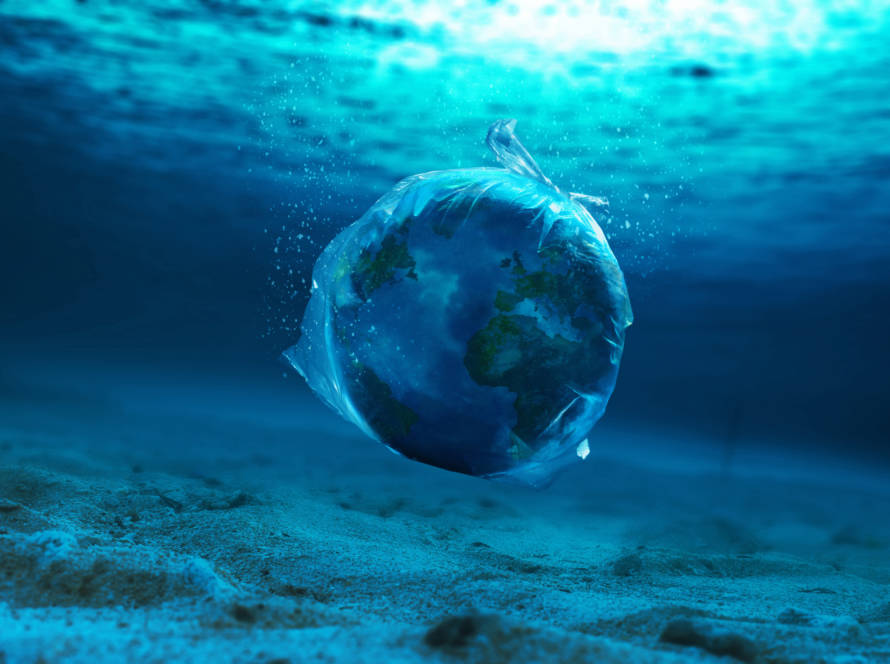Recycling allows us to give waste a second chance and turn it back into a useful product for people. Isn't it great to know that the product we threw away has found a new meaning? Even though many people already know about the benefits of recycling, we cannot fail to mention its greatest benefits.
Recycling plastic reduces the amount of waste that goes to landfills, reduces energy consumption and the consumption of natural resources. Thanks to recycling, the energy needed for the production of a plastic bottle is reduced by 80% than for the production of one made with virgin materials. The production of newsprint is 40% more efficient and 20% less energy is required to create glass products. By recycling, we reduce the environmental footprint associated with the extraction and transport of primary raw materials.
In this article, we will talk about the benefits of using recycled materials so that we can all enjoy a cleaner planet and participate in changing the future.
How are plastics recycled?
In the recycling process we divide plastics as:
Easily recyclable: HDPE, PET
Medium recyclable: PVC, PP, PS
Hardly recyclable: PET bottles with PVC foil
In some households, sorting plastic waste is still not the norm. When recycling, it is important that the waste is sorted properly. We put the plastics in a yellow trash can. There should only be a plastic waste, although it is still manually sorted on sorting lines. However, this container should not include plastics that are contaminated with chemicals, e.g. foils used in construction work. We do not have to clean the waste thoroughly because it undergoes industrial cleaning. It is separated from other impurities and is divided according to type, quality and color.
The sorted plastic waste is then pressed into bales and transported to recycling plants. In recycling plants, sorted plastics are mechanically adjusted according to the hardness of the plastics, by crushing, cutting, shearing, grinding, by which the waste is reduced to the required size. The treated plastics are washed to get rid of heavy soiling. After washing, they are dried, which reduces the water content in the pulp. The regranulation process melts the plastics. In the granulating machine, strips of material are extruded from this mass, which are further cut to the desired size. The resulting granulate can have different shapes and we use them to make new products.
Recycled plastic products
Unfortunately, not all plastics are recyclable. This is the case of disposable diapers, sanitary napkins, toothbrushes or automotive plastics. Therefore, if we continue to use plastics, we should at least choose those that can go for reprocessing. If not, choose their more environmentally friendly variants.
Thanks to plastic recycling, other products are created. Sometimes the ones we had no idea were made of plastic. Throughout the plastic recycling process new bags, pieces of clothing or other textile accessories for households are created, such as carpets.
Surprisingly, in the European Union, Slovakia and the Czech Republic are above average when it comes to recycling. According to Eurostat, Slovakia recycles 53% of plastic packaging, while in Austria, Poland or Hungary only 30% is recycled.
Recycled plastic and the use of more environmentally friendly plastic variants could be a solution to the global problem of plastic waste. Let's mention a few examples of organic products: paper straws, cloth bags, coffee-to-go cups, glass food boxes, recycled PET bottles, etc.
The European Union has imposed an obligation on the recycled content of new PET bottles. By January 1st 2025, there must be 25% recycled material in the new bottle and then 30% recycled material no later than January 1st 2030. Increasing the content of recycled material in PET bottles and the consumption of organic products will benefit everyone.
Advantages of using paper straws
- paper straws are biodegradable
Recycling alone would not help plastic straws. Even so, they would probably end up in landfills or in the oceans. Paper straws, on the other hand, are biodegradable and compostable, which means that even if they end up in that ocean, they will begin to disintegrate within 3 days.
- they decompose faster
The fact that plastics take up to 500 years to decompose was mentioned in an article on the impact of plastics on the environment. Unlike plastic straws, which would decompose into dangerous microplastics, paper straws decompose back into the ground within 2-6 weeks.
- paper straws are affordable
Many companies have become aware of the topic of environmental protection, and after the application of the law on the prohibition of disposable plastics, the demand for paper straws has increased. At INIPEX you can buy high-quality straws at a competitive price.
- paper straws are safer for wildlife
Now you cannot have any doubts that paper straws are environmentally friendly and safe for wildlife and sea animals.
Try our ecological high-quality paper straws INIPEX. Thanks to modern technology, we can produce up to a million of them a day in the ecological environment of Squarebizz.


